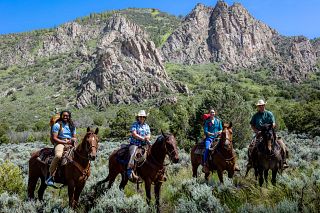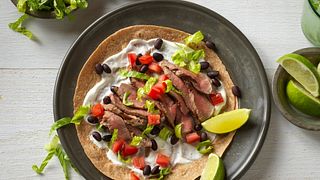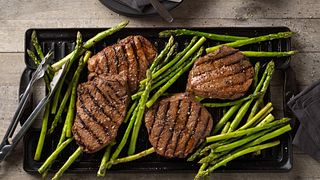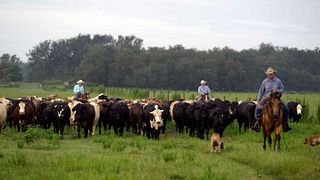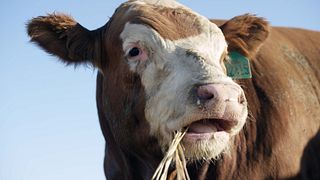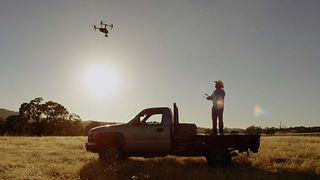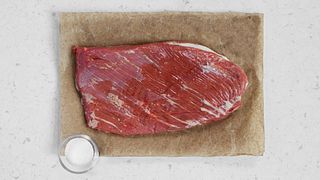Ranchers & Outdoorsmen: shared values of caring for the land
When you picture a rancher, you probably picture a cowboy hat, boots and a horse. You’re probably not picturing a conservationist. And yet, that’s exactly what ranchers are. While raising cattle, they work to protect and conserve the land that they have been entrusted to manage and that we all depend on. Without them, this land would be developed and the open spaces we all cherish would be lost. 1-5
If that land wasn’t maintained or was converted into buildings, outdoors enthusiasts like hikers, bikers, climbers, skiers, surfers and more wouldn’t be able to enjoy the land for their activities.
In fact, cattle graze on and preserve more than 250 million acres of permanent pasture and rangeland, which is also used for recreation and wildlife habitat. There are numerous benefits of having cattle naturally preserve this land, including protecting wildlife habitats and precious ecosystems, mitigating wildfire and sequestering carbon.6-11
Protecting Wildlife Habitats
Cattle grazing protects the open space that many plants and animals call home. In fact, in the United States, the land that is managed by ranching families preserves the habitat of hundreds of species, like butterflies, waterfowl, songbirds and countless others, including many that are on the endangered list.5,12-13
Almost a third of U.S. land is too rocky or dry to be used for anything else like growing food crops. But cattle can graze on and regenerate that land, naturally conserving precious habitats and ecosystems.9,14
Cattle help naturally preserve these spaces so the rest of us can enjoy them, whether that’s through hiking, bird watching or rock climbing.
Mitigating Wildfire
Mitigating wildfires is just one important role cattle play in our environment. By eating the overgrown natural forages, cattle help prevent fire because they remove fuel that could otherwise feed flames during wildfire season. 1,10 By eating overgrowth, cattle also promote healthy plant regeneration and ground cover, which helps hold water in the soil, making the area more resistant to fire.
The cost of fighting fires continues to make up a larger portion of the U.S. Forest Service’s budget, taking away from resources that could be used to proactively prevent wildfire. When wildfire decimates landscapes, it makes using them for recreation purposes nearly impossible.
Sequestering Carbon
Not only does the land where cattle graze provide space for recreation, it also contains between 10 and 30 percent of the carbon stored in soil. If that land was developed, we would release that carbon and lose the ability to capture additional carbon on that land in the future. So, beef cattle grazing helps preserve the land and prevent development, but it also regenerates this land and helps sequester carbon naturally as cattle graze.11,15
Beef farmers and ranchers care deeply for the environment and have a vested interest in sustainability. So do outdoors enthusiasts. Ranchers want to care for the land that was passed on from their ancestors and leave it better for future generations, and they know that without careful, sustainable management, there’s no land to pass on. Outdoors enthusiasts want to enjoy and appreciate the land, maintaining it as they go so they can share their interests with future generations. The two groups share these same values. 2,3,6
- Brunson, MW and L. Huntsinger. 2008. Ranching as a Conversation Strategy: Can Old Ranchers Save the New West? Rangeland Ecology & Management 61(2): 137-147.)
- National Cattlemen’s Beef Association (NCBA). 2017. 2017 Cattlemen’s Stewardship Review. Found on https://www.beefboard.org/2018/05/14/2017-cattlemens-stewardship-review/.
- USDA-NASS. 2017. Census of Agriculture. Farm Typology. https://www.nass.usda.gov/Publications/AgCensus/2017/Online_Resources/Typology/typology.pdf
- Sayre et al. 2012. Ecology and Society. The Role of Rangelands in Diversified Farming Systems: Innovations, Obstacles, and Opportunities in the USA. Accessed December 2020. Ecology and Society: The Role of Rangelands in Diversified Farming Systems: Innovations, Obstacles, and Opportunities in the USA
- Maestas, J.D. et al. 2003. Biodiversity across a rural land-use gradient. Conservation Biology 17(5): 1425-1434)
- Teague et al. 2016. The role of ruminants in reducing agriculture’s carbon footprint in North America. Journal of Soil and Water Conservation 71(2). Found on: The role of ruminants in reducing agriculture's carbon footprint in North America (jswconline.org).
- Maher et al. 2020. National and State Economic Values of Cattle Ranching and Farming-Based Ecosystem Services on Federal and Private Lands in the U.S. Sustainable Rangelands Roundtable Publication
- Scott, Dave. 2018. Livestock as a Tool: Improving Soil Health, Boosting Crops. NCAT. Found on https://attra.ncat.org/product/livestock-as-a-tool-improving-soil-health-boosting-crops/
- Barry, Sheila. 2021. Beef Cattle Grazing More Help than Harm for Endangered Plants and Animals.
- Taylor, Charles. 2006. Targeted Grazing to Manage Fire Risk. University of Idaho. Found on: https://www.webpages.uidaho.edu/rx-grazing/Handbook/Chapter_12_Targeted_Grazing.pdf
- Silveira, et al. 2012. Carbon sequestration in grazing land ecosystems. University of Florida Extension. https://edis.ifas.ufl.edu/pdffiles/SS/SS57400.pdf
- Johnson, R.L., et al. 2020. Evaluating Ecosystem Services: Value and return on investment of conversation easements held by the California Rangeland Trust. California Rangeland Trust. https://rangelandtrust.org/wp-content/uploads/2020/10/ESS_Executive-Summary_Corrected.pdf
- PERC. 2019/2020. Conserving Migration Corridors. PERC Reports. https://www.perc.org/wp-content/uploads/2019/12/PR-Winter19.pdf
- USDA-ERS. 2021a. Economic Research Service using data from the Major Land Use data series. Available at: https://www.ers.usda.gov/data-products/major-land-uses.aspx
- Schuman, et al. 2002. Soil Carbon dynamics and potential carbon sequestration by rangelands. Environmental Pollution 116: 391-396. https://www.onpasture.com/wp-content/uploads/2017/11/Soil-carbon-dymanics-and-potential-c-seq-by-rangelands.pdf
